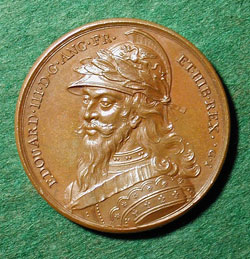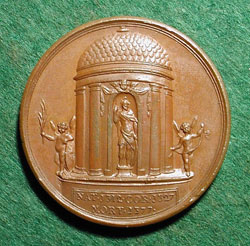

|
EDWARD III |
|
|
Edward III (Edward of Windsor) 1312-1377) was king of England from 1327 to 1377. He was the eldest son of Edward II and Isabella of France. In 1328 Edward married Philippa. During the first three years of his reign, his mother, Isabella and Roger Mortimer wielded all the political power. In 1330 Edward mounted a successful coup and sought to remake England into the powerful nation it had been under Edward I. During the 1330s England gradually drifted into a state of hostility with France, thus starting the 100 years’ war. He led several campaigns in France, was present in person at the great naval battle off the Flemish city of Sluis in 1340, in which he all but destroyed the French navy and won a victory at Crecy in 1346, claiming the title of King of France. In 1356 Edward’s son, Edward the Black Prince, captured John II (The Good) of France at the Battle of Poitiers. During Edwards III’s reign, the Black Death brought heavy mortality to his country. Domestically, Parliament was divided into two Houses and was permanently located at Westminster. He spent much time and money in rebuilding Windsor Castle. He also instituted the Order of the Garter, which became Britain’s highest order of knighthood. In his old age, Edward’s sons, Edward the Black Prince, and John of Gaunt, took over the government. He was succeeded by his grandson, Richard II. |
|